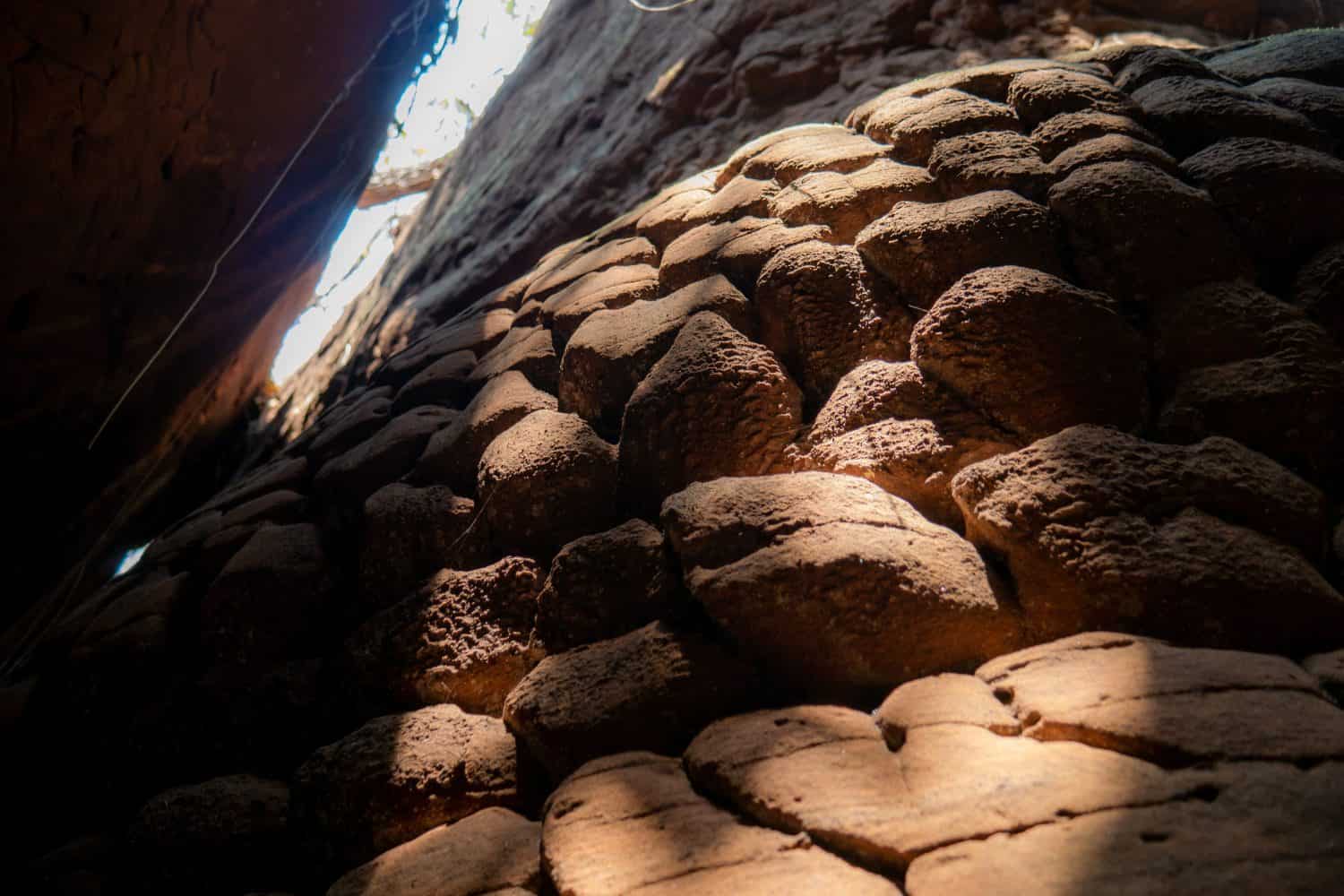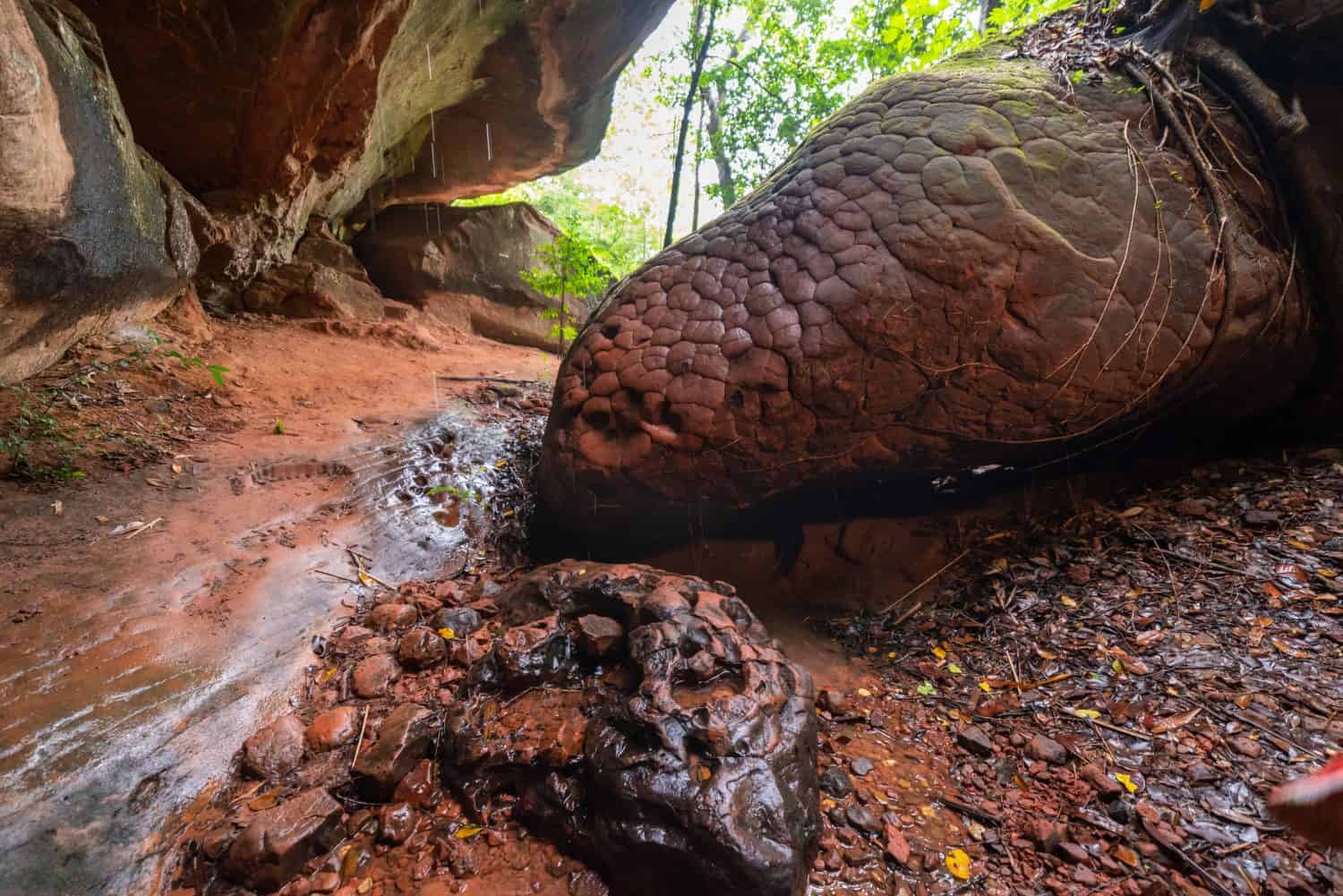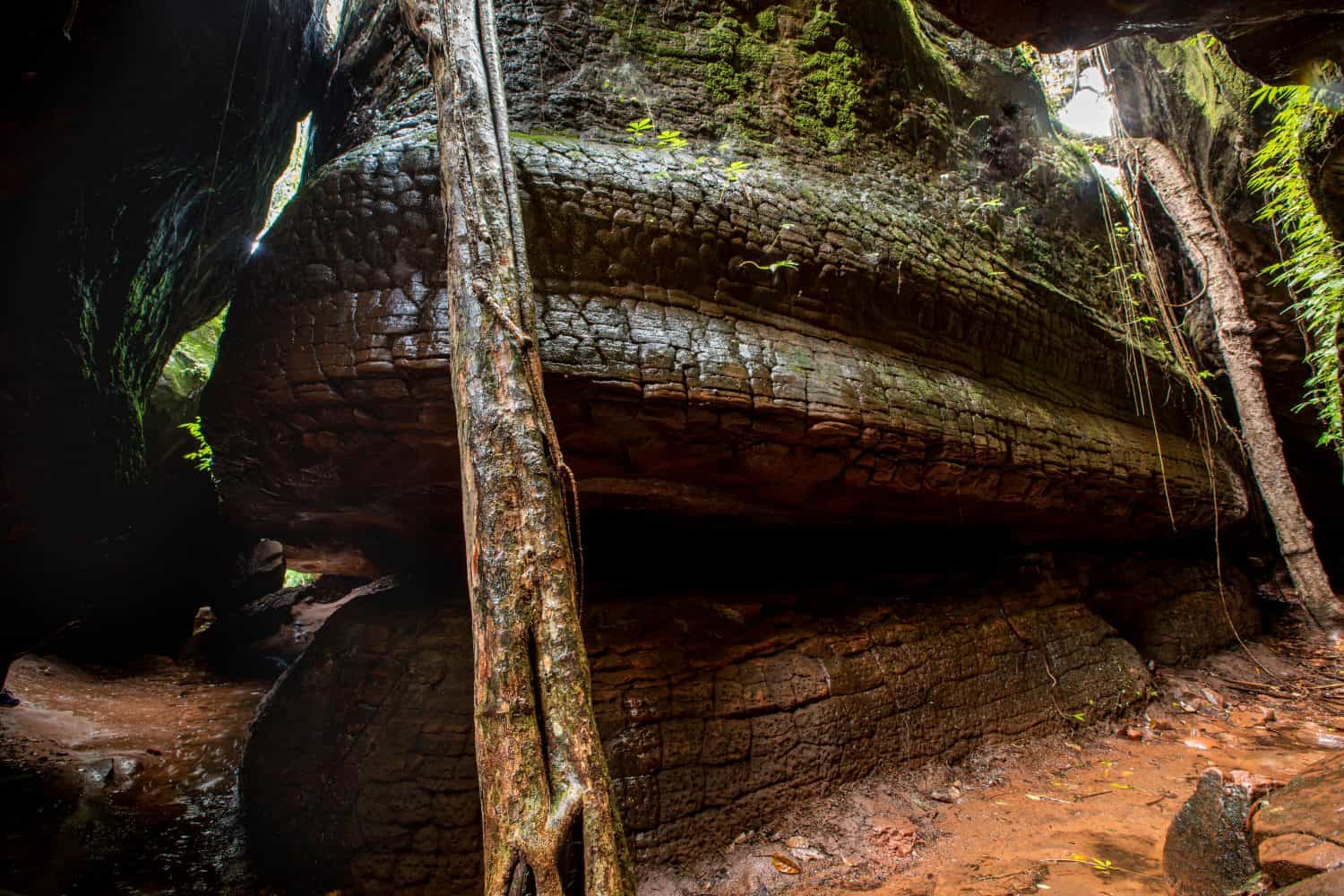Thailand is a popular destination because of its natural beauty and tasty cuisine. But within the protected wilderness of the Phu Langka National Park near the famous Mekong River is an unbelievable formation that resembles the fossil of a giant snake. Discover the snake rock in Thailand and find out whether it’s a massive fossil or something else entirely.
What Is the Snake Rock?

The snake rock in Phu Langka National Park is one of Thailand’s natural wonders.
©PumpCH/Shutterstock.com
The snake rock in Thailand, known as Naka Cave or Naga Cave, is shrouded in mystery. Many believe it’s the work of powerful mythical beings, while others suspect it’s man-made. However, it’s one of the country’s many natural wonders. It’s located in Phu Langka National Park, Ban Phaeng, Nakhon Phanom, and is the center of many popular myths and legends. The sun-cracked rocks resemble a giant serpent with stone slabs in the shape of a snake head and the scaly texture of its coiled body.
What Can You Find Inside the Snake Rock in Thailand?

You can find lakes and mineral deposits inside Naga Cave.
©Love Silhouette/Shutterstock.com
Nestled within the foliage and other unique stone formations is the snake rock in Thailand. Naga Cave is a tourist attraction surrounded by an abundance of wildlife and limestone cliffs. In fact, the area provides a beautiful view of the mountains in addition to an up close and personal view of the mystical snake rock.
Inside Naga Cave are two chambers that look like a trail, one of which is open to tourists. The stalactites and the stalagmites are the first things you will notice. Natural light seeps in through rock crevices, illuminating the intricate pattern on the sun-baked rocks and the beautiful mineral deposits. You can also see several lakes and surrounding shrines.
Myths and Legends

The snake rock takes the form of an ancient naga king.
©SOMSAK 2503/Shutterstock.com
Naga is the Sanskrit word for serpent and is a mythical semi-divine being according to Buddhism, Hinduism, and Jainism. These half-human and half-cobra beings can take the form of an entire human or an entire serpent. They live in the underground kingdom Naga-loka (sometimes called Patala-loka). The naga are known for their power and attractiveness.
The snake rock in Thailand takes the form of a naga. In fact, according to some of the legends, the Mekong River in northeastern Thailand was created by naga kings. If you follow the lore, the snake rock is one of the naga kings that slithered through what is now Phu Langka National and remains in a deep slumber.
Others believe the snake rock in Thailand is indeed a massive fossil of a petrified serpent. According to speculation, it’s a giant Titanoboa forever preserved due to volcanic eruptions. Due to the size of the cave and Titanoboa, the theory seems pretty close.
Despite the popular myths and legends, Phu Langka National Park officials say the snake rock is made from 100,000-year-old rocks. The significant temperature difference from day to night caused the rocks to expand and contract and finally crack. Now, we have the intricate scale-like pattern that decorates the unique rock formation.
Can You Still Visit the Snake Rock in Thailand?

Visitors worldwide are welcome to see the snake rock in Thailand.
©releon8211/Shutterstock.com
Officials in Thailand put out an indefinite closure on the Phu Langka National Park in 2020 because visitors defaced the Naga Cave. In addition to offensive graffiti, the surface of the unique rock formation was damaged as visitors attempted to find lucky lottery numbers. Naga Cave officials developed effective measures to protect the natural wonder from further vandalism.
However, the indefinite closure was lifted in 2022, granting access to a limited number of visitors to the park a day. All visitors must have a pass and are accompanied by a tour guide. Certain parts of Naga Cave are roped off to prevent visitors from further touching or destroying the attraction.
You can reach the snake rock in Thailand through the border of the Phu Langka National Park, as well as through the Lao People’s Democratic Republic. If you plan to visit Snake Rock from Bangkok, the capital of Thailand, it’s approximately a 10-hour drive.
Thank you for reading! Have some feedback for us? Contact the AZ Animals editorial team.








